The table and photos below show all the gear I thought I would be taking on my Te Araroa trip. After publishing this post but before heading to New Zealand I took out bits and pieces to save on weight and swapped different pieces along the trail. By no means ultralight it is light weight and is gear that works for me. My average base weight was around 11kg plus consumables (food, water, gas etc…)
Click here for my pre trip Te Araroa Gear rundown
Click here for my post trip rundown on what I actually ended up carrying.
If you want to lighten up your load but don’t know how are or looking for some tips check out backpackinglight.com
Insulation clothing
- Mountain Hardware Ghost Whisper down jacket (black)
- Montne wind jacket (orange)
- Fleece pullover (blue) – has been removed from list
- Icebreaker thermals
- Thinsulate gloves
- Icebreaker beanie
- Buff
Gear update: what changed along the way
Sleep system:
- Swapped out xlite sleeping mat to Thermasrest Neo Air. Sleeping mat was fine for a couple of weeks but bulky and I found I needed better comfort for a 4 month trip.
Technology:
- Monopole left at home
Cooking:
- Double boiler gear, spatula and silicon mold sent home
- Switched to gas cooker. Found cat food can stove and metho just not cutting it for me.
- Mug didn’t make the cut and was left at home.
- Switched to a smaller pot, send the original home.
Clothing:
- Ditched the rain skirt. Ok for showers but useless in driving, heavy rain.
- Sent liner socks home.
- Switched sleeping socks for much smaller, lighter pair.
- Fleece pull over never made it into the pack and was left at home.
- Visor switched to Outdoor Research Sun Runner for better sun protection and detachable neck cover.

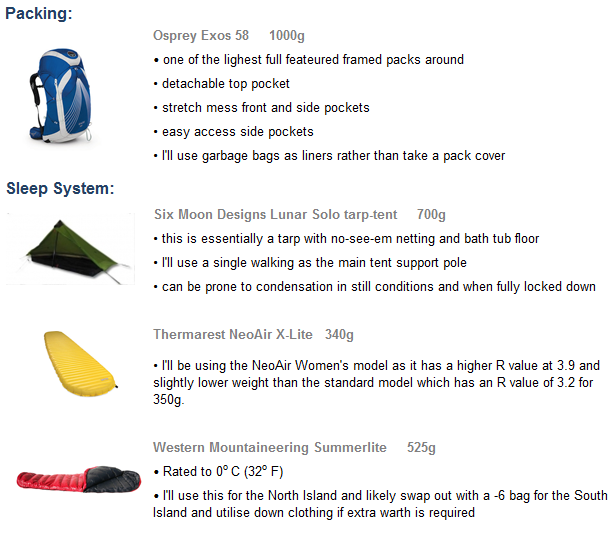
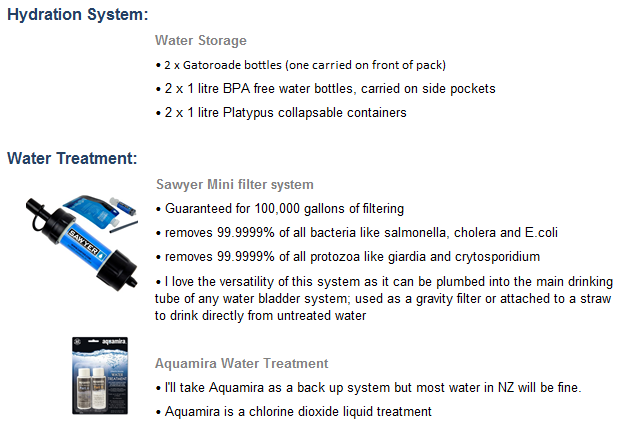

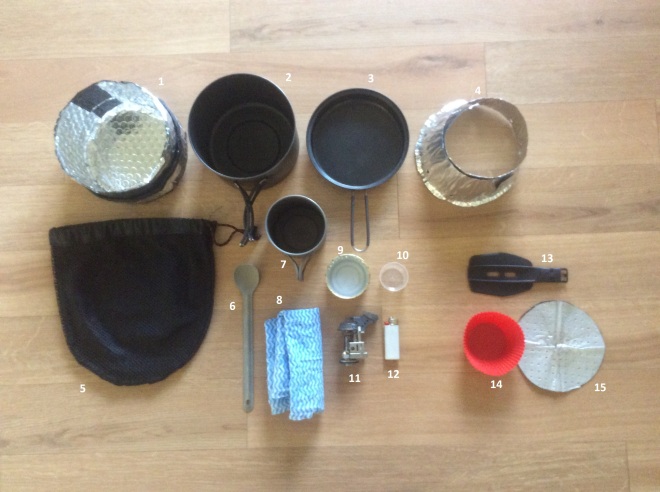


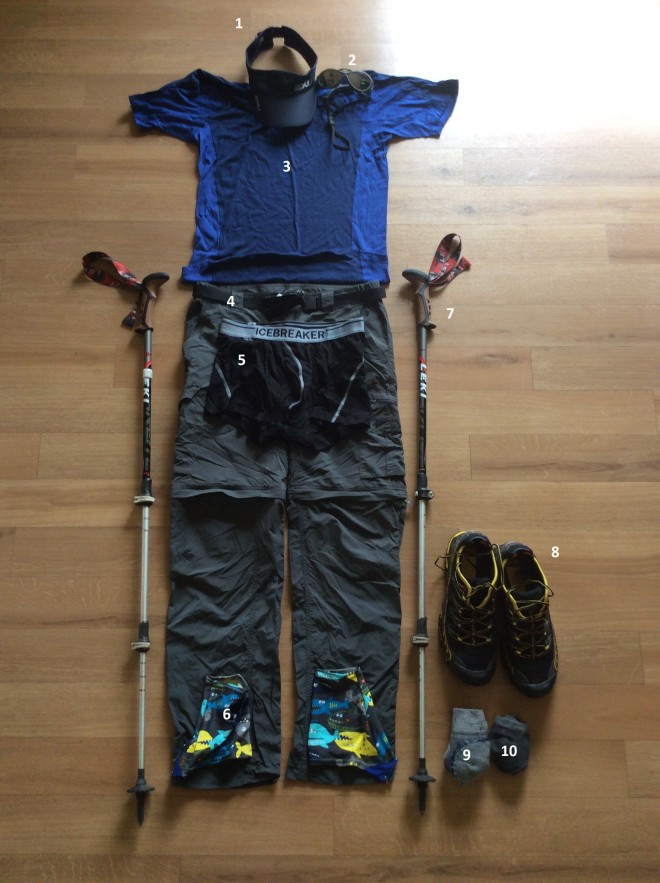


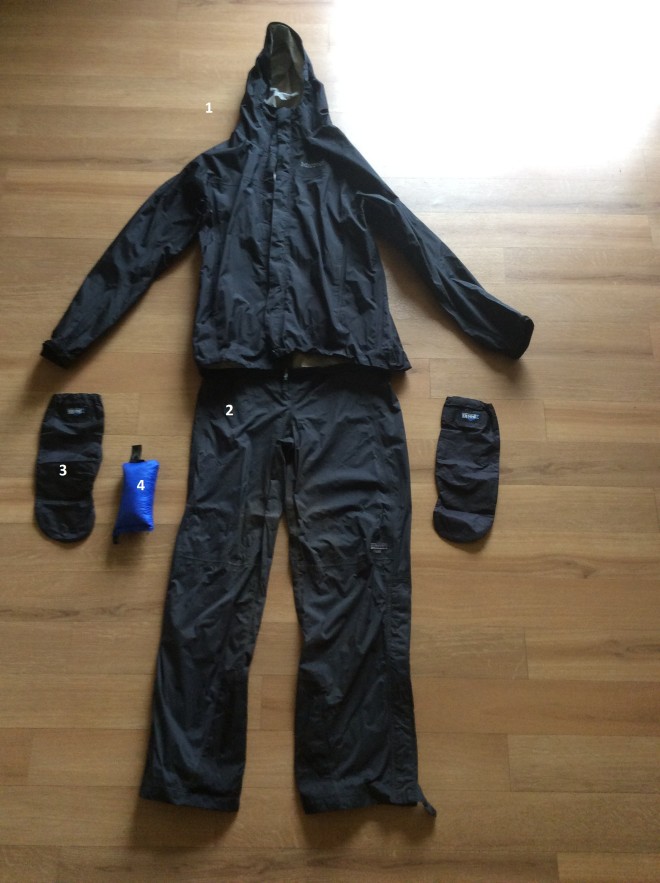





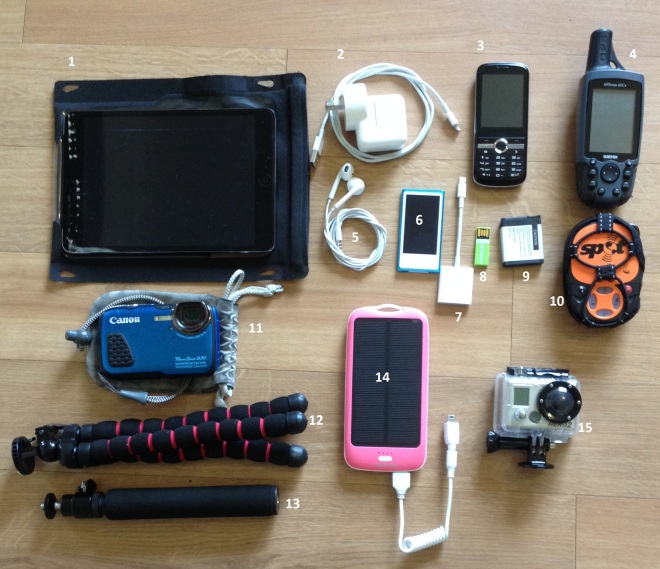
Great gear breakdown! I’m curious as to what your thoughts on the fleece are after you finished the trail?
The ghost whisperer is a great insulation layer, but I’m wondering how you fared on those cold and wet days without another midlayer (assuming that you did’nt wear your down jacket in the wet!).
Cheers. Been a great read!
LikeLike
Hey Flynn, i did not end up taking a fleece. I opted for just one insulation layer being the down jacket. It’s warm enough walking and even in rain I was comfortable enough with a thermal base underneath my shell jacket. Have fun out there. Happy trails. Mick
LikeLike
Cheers Mick!
LikeLike
Actually, couple more questions:
1. Did you use the overmitts at all?
2. How did the Marmot precip hold up?
Cheers 🙂
LikeLike
Flick me an email if you like. I’d be happy to answer any questions you have: mickbeckers@yahoo.com.au
Yep for Mitts – Zpacks challenger mits. Really light but not that warm. Found i needed to wear merino gloves underneath for warm. But the mitts were great at keeping the rain and wind at bay.
Marmot precip survived everything that was thrown at it. No jacket is actually waterproof and breathable so there were times when it was getting sweaty – pit zips were nice for venting. It was warm enough for any wind and rain. Read my blog post for over the Tararua Ranges with bucketing down winds and driving rain. Precip survived that but wouldn’t want to have a full day in conditions like that with this jacket.
LikeLike
Hey Mick,
Love the blog, and the documentry as well!
This is a great overview of your gear list- very much appreciated. I am hiking this October and I have long gaiteres of 146 grams and was thinking of getting lighter ones (saving another 100 grams) but am worried about plants and such scratching my shin’s till they bleed? I heard there’s alot of sharp grass everywhere.
I am however bringing a lightweight climbing pant, both for really cold days and/or town/laundry days so I could use that on grassy days, then again i won’t be changing in the middle of the day I guess, so still wondering if the small ones will cut it? Did you like the short gaiters?
Thanks 🙂
Kelly
LikeLike
Hi Kelly. Thanks for the compliments. I love my Dirty Girl Gaiters. Short gaiters will definitely cut it. I just got back from doing the full Larapinta Trail with them. The perfect match for trail runners. They were great for the North Island (and much of the south) for keeping sand and debris out of my shoes, which is awesome to prevent blisters. But they don’t do much for the mud of the northern forests – stepping into thick mud cause the sides it lift and allow mud to seep into my trail runners. Longer gaiters would be better for this but only for the odd day and would be too hot to wear all the time, particularly road walking – but you don’t want to be mucking around taking them off and on all day and you won’t want to get your cold night wear/town cloths covered in mud. You’ll get the odd scratch but you won’t end up with bloody shins with short gaiters. But the short gaiters don’t do much for spikey plants biting the legs. I can’t recall these being much of an issue in the North Island – different storey for the South Island. There is an aptly named grass, Bastard Grass (Carex uncinata) along the length of the trail whose seed heads would stick to my hairy legs and it felt like someone was pulling hair out as you brush past – small gaiters did nothing to prevent this on my lower legs where long gaiters or pants will but the pain is short lived and temporary. This species doesn’t scratch – just pulls your hairs out. The seeds will likely grab your pant legs. It was hard to predict coming across this species, so makes it harder for knowing when to wear long pants or not. The main spiky plant on the north island is gorse. If anything gorse was more of an issue for the upper body when pushing overgrown tracks, although there were times it was a pain for the legs. Other people have used their rain pants for these sections. On the South Island I sent long gaiters ahead with a food box to Lake Coleridge for walking the tussock country through to Tekapo. There are a couple of nasty buggers in the tussock country – speargrass (Aciphylla) or spiky spaniard and Matagouri (Discaria toumatou). Even long gaiters did not fully stop getting bitten in the legs by these species. I recall some short sections with head high Matagouri – not much you can do about it. Speargrass is easy to see and avoid but there was the odd occasion that a hidden bush would pierce through my long gaiters – pants won’t do much to prevent this. From Tekapo down I don’t recall any issues with spiky plants – or maybe my legs just toughen up to resemble leather. When all is said and done – go the dirty girls – they rock! Don’t stress too much – you’ll be fine. Hope that helps. Sing out if you have any other questions – I love talking gear and am looking at my own kit right now for an upcoming trip along the Pacific Crest Trail. Cheers. Mick
LikeLike
Hey Mick,
Thanks for that detailed reply, this takes a lot of my worry away!
I did chuckle a bit at the ‘bastard grass’, it sounds very appropiatly named.
I actually will bring a razor with me so i won’t be extremely hairy legged I hope haha!
I don’t think Dirty girl gaiters are not very easily available in Europe, but I might go for some Outdoor Research trail/runner short gaiters then. They also have a cord underneath the shoe to keep it in place during hiking (may be nice for the northern forests). This will at least save another 100 grams and I think else I will get hot legs during walking and they would end up in my pack most time anyway. Thanks!
Well, I am wondering, do you think long pants are absolutely necessary for the South Island?
I’m bringing just Icebreaker shorts, a camp/town/spare long pants if it really is cold, and just a Odlo leggings for sleeping (which I guess can also be used as spare hiking). Would these 3 kinds of legwear be overkill or just enough for variety of choice?
Other than that im bringing 1 tanktop (spare for hot weather + town), 1 tshirt (main hiking shirt) and a longsleeve (mostly sleeping shirt, or backup in cold days). Ive seen a lot of people taking only 2 pieces of clothing, but I can’t get used to the idea of having even less then I have now. It was nice to see town clothes in your gear list!
When are you planning on the PCT? Are you going NOBO? I Guess the kit can be a lot lighter on the PCT? I just read the permit system is launched on Novemebers 1st already this year, really early. I’m going to try and get a permit as well, and do a 2,5-3 month trip on the PCT. Visa is a bit tricky (and risky, if you get denied you may never get in the US ever again) so i’m going for a short one. Desert and sierras for me. If i dont get a permit I might hike in Japan/South Korea first and then do a 3 months SOBO in Washington/Oregon on the PCT. But first Te Araroa and then i’ll see what happens.
LikeLike
Hey Kelly, the main thing with clothes choices and the south island, is to not leave your run to Bluff too late. You want to get there before late April/early May or you will dealing with snow in sections. Shorts will be fine if you have something longer to thrown over the top when you need to. 3 layers will keep you warm for sure as long as they stay dry. Mornings on the SI were colder so I would start many day with the bottom of my zip off pants attached and then remove them later. I would highly recommend some sort of rain protection – this doesn’t have to be rain pants though. I used a rain skirt for a lot of the time and you can make one from a tie up garbage bag to keep the weight down and very low $. For your top half, what you have listed will be perfect for walking but don’t forget about an insulation layer for sitting around huts or camp – its cold at night – and a rain shell of course. Town clothes, although only a pair of shorts and a shirt, were great to have. I didnt want to have to sit around in my rain gear while doing the laundry. Best advice with gear: go as light as you can but make sure you are comfortable. PCT will be next season (April 2018) hopefully, heading NOBO. It will be tricky getting a permit but I’ll have to give it a go. Maybe see you out there. There is so much to do in life – Japan would be awesome.
LikeLike
Other than my 3 layers I have a good (quite heavy duty) rain jacket with pit zips, a rain skirt (love it and it’s not as sticky and sweaty as pants!) and other insulation layers are a lightweight fleecy midlayer, a down jacket and a wind jacket. I have awful temperature regulation and hardly hold any heat (but also get too hot really quickly) so I’d rather be safe than sorry with all these layers haha. I hope to have a base weight of 9 kg when I leave, UL just seems too far away and frankly quite risky with NZ weather, but I guess that’s a very personal thing.
Ahh Yes, my return flight is in the first week of April so i’ll have to be done by then for sure, and who knows we might meet on the PCT. Good luck, I hope you get the permit 🙂 Thanks again for your detailed reply!
Kelly
LikeLike
Hey MIke,
Back with another question 🙂 I’m just wondering if you ever felt like the GPS was not needed? I’ve seen so many people not taking one, and relying on their phone GPS. How was your experience with finding your way?
LikeLike
Hmm…. mixed thoughts about this. To be honest I did not use my GPS a lot for navigation, although when I did need I was glad to have it and it got me out of trouble on a few occasions when I completely lost the track for a good length of time (I’m talking kilometres off track). Phones are pretty good these days and with the right app showing quality contour maps and the trail they will get you out of trouble. On arrival in NZ I purchased the cheapest phone I could and it wasn’t a smart phone so I couldn’t use it for navigation. My main navigation was the good old map and compass. I wouldn’t rely solely on a phone for navigation, only as a back up on the odd occasion. The main concern would be battery life but they are accurate enough with the right base map. You can get the entire country on 1:50000 topo maps for free. Hope that helps.
LikeLike